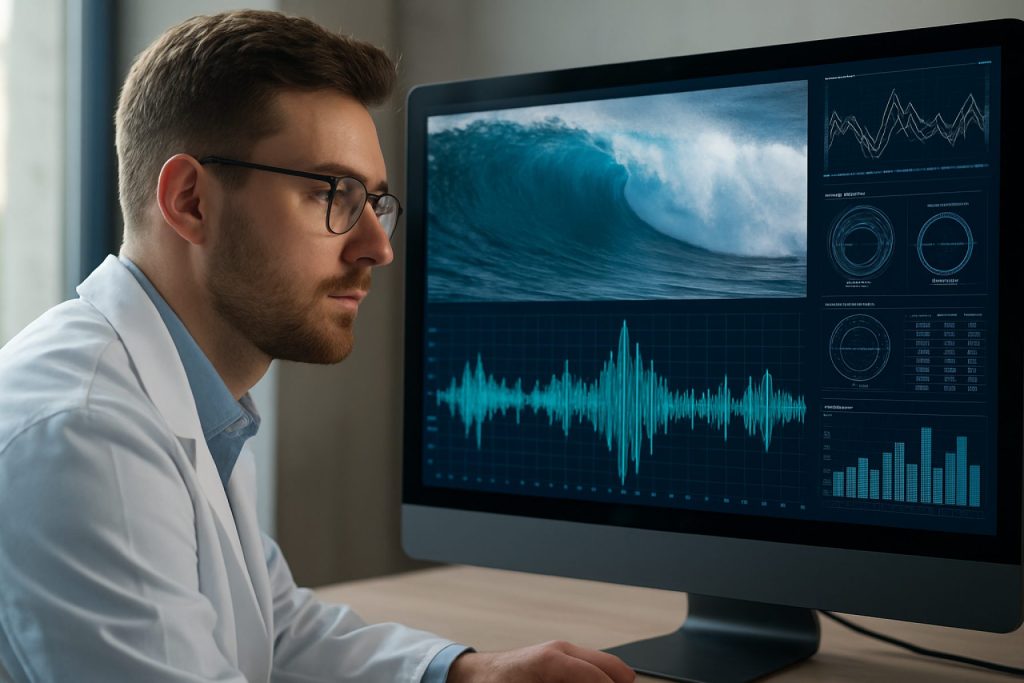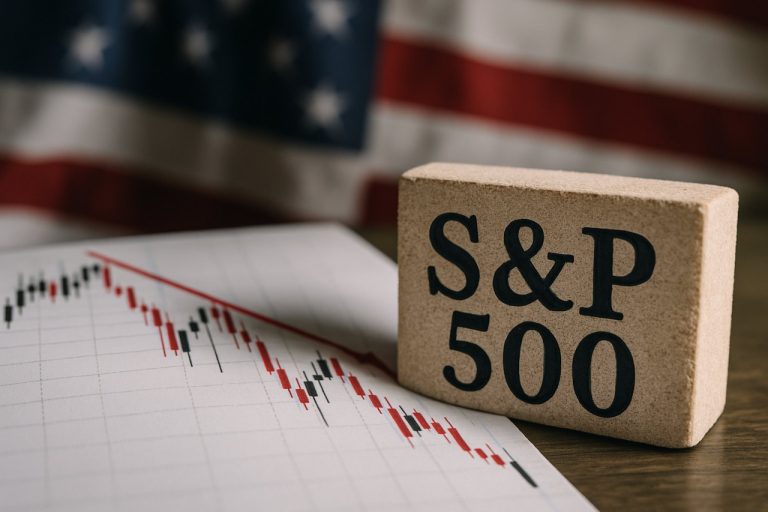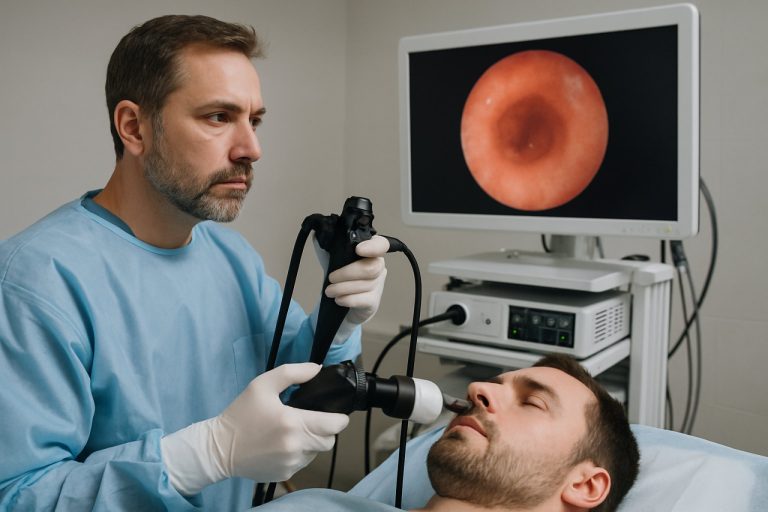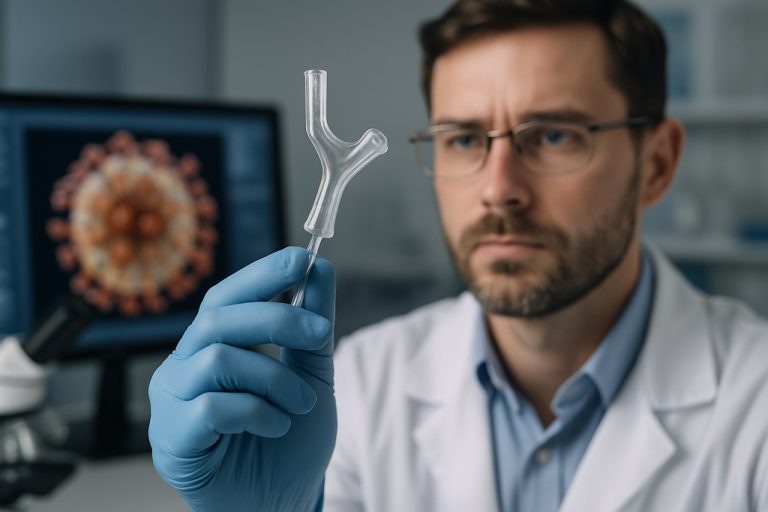
Table of Contents
- Executive Summary: 2025 Market Outlook and Key Trends
- Aquatic Waveform Analysis Technologies: Definitions and Evolution
- Current Leaders and Innovators: Company Profiles and Official Industry Insights
- Market Size, Growth Projections, and Revenue Forecasts (2025–2030)
- Breakthrough Technologies: AI, Machine Learning, and Sensor Advancements
- Applications: Environmental Monitoring, Marine Biology, and Industrial Uses
- Regulatory Landscape and Standards (citing IEEE, ASME, AWWA, and ISO)
- Case Studies: Real-World Deployments and Official Results
- Challenges, Risks, and Barriers to Adoption
- Future Outlook: Opportunities, Investment Hotspots, and Next-Gen Trends
- Sources & References
Executive Summary: 2025 Market Outlook and Key Trends
The aquatic waveform analysis technologies market is experiencing significant transformation in 2025, driven by increased demand for precise water quality monitoring, environmental compliance, and advanced research capabilities. Key market segments include real-time water condition sensors, portable waveform analyzers, and integrated data analytics platforms, all of which are benefiting from rapid advances in sensor accuracy, data transmission, and AI-powered interpretation.
Throughout 2024 and into 2025, industry leaders and innovators have launched a new generation of sensor arrays and software platforms capable of capturing and analyzing complex waveform data—such as acoustic, optical, and electrical signals—from diverse aquatic environments. For example, Xylem Inc. has expanded its multi-parameter sondes with enhanced waveform analysis modules, addressing both freshwater and marine applications, while Hach Company is integrating machine learning into its water quality monitoring systems to improve detection of chemical and biological anomalies.
The adoption of cloud-based platforms is accelerating, as evidenced by IDEX Corporation‘s recent deployment of scalable data solutions for remote aquatic sensor networks, facilitating real-time waveform data sharing and cross-site analytics. Simultaneously, edge computing capabilities are being embedded in devices by companies such as Yokogawa Electric Corporation, enabling on-site waveform processing and immediate anomaly alerts.
Key drivers in the 2025 outlook include stricter regulatory compliance for water utilities, heightened monitoring needs due to climate change, and expanded use of aquatic waveform analysis in aquaculture and coastal management. Notably, the U.S. Geological Survey (USGS) has increased deployment of high-frequency waveform sensors to support national water-quality initiatives and disaster response, reflecting broader governmental investment in advanced monitoring infrastructure.
Looking forward, the next few years are set to witness further integration of artificial intelligence, miniaturization of sensors, and expanded interoperability between hardware and software systems. These trends are expected to enhance the resolution, speed, and actionable value of aquatic waveform analysis, supporting a global move toward smarter, data-driven water management and environmental stewardship.
Aquatic Waveform Analysis Technologies: Definitions and Evolution
Aquatic waveform analysis technologies refer to hardware and software systems designed to detect, capture, and interpret waveforms generated in aquatic environments. These waveforms, which include surface waves, acoustic signals, and electromagnetic signatures, are essential for monitoring physical, chemical, and biological processes in oceans, lakes, rivers, and other water bodies. The evolution of these technologies has been marked by the integration of advanced sensors, real-time data analytics, and remote communication capabilities, enabling more precise and comprehensive analysis than ever before.
Historically, aquatic waveform analysis relied on analog hydrophones and simple oscilloscopes, which provided limited resolution and required manual data interpretation. Over the past decade, the proliferation of digital hydroacoustic systems and multi-sensor platforms has transformed the field. By 2025, leading solutions employ arrays of high-fidelity sensors—such as digital hydrophones, sonar transducers, and optical sensors—integrated with edge computing devices for in situ data processing. These platforms can autonomously identify waveform patterns associated with marine life, physical disturbances, pollution events, or vessel traffic, greatly improving situational awareness for researchers and industry stakeholders.
Key players in the sector have developed and deployed robust aquatic waveform analysis platforms. For example, Kongsberg Maritime offers sophisticated hydroacoustic systems capable of capturing detailed underwater soundscapes and analyzing them for research and commercial applications. Similarly, Teledyne Marine provides advanced acoustic imaging and waveform analysis tools used in fisheries, environmental monitoring, and subsea infrastructure inspection. The integration of AI-driven analytics, as seen in offerings from Sonardyne International, allows for automated classification of acoustic events and real-time anomaly detection.
Recent advancements have also focused on improving data connectivity and remote accessibility. Many platforms, including those from Sea-Bird Scientific, can transmit waveform data in real time via satellite or cellular networks, supporting rapid response to environmental incidents and enhancing global monitoring capabilities. Open-source standards and interoperability initiatives are being promoted by organizations like the Ocean Observatories Initiative, facilitating the integration of diverse waveform analysis systems into unified observation networks.
Looking ahead to the late 2020s, aquatic waveform analysis technologies are expected to benefit from further miniaturization, increased sensor sensitivity, and the widespread adoption of machine learning for predictive analytics. These trends will likely expand applications in climate research, maritime security, and ecosystem health monitoring, solidifying waveform analysis as a cornerstone of aquatic science and management.
Current Leaders and Innovators: Company Profiles and Official Industry Insights
The aquatic waveform analysis sector is witnessing significant advancements, driven by both established companies and emerging innovators aiming to enhance underwater measurement precision, data integration, and real-time analytics. As of 2025, leaders in this space are leveraging sophisticated sonar, lidar, and machine learning algorithms to enable more refined detection, classification, and monitoring of aquatic environments.
Among established players, Kongsberg Maritime continues to be a benchmark in hydroacoustic instrumentation, offering multibeam echo sounders and real-time data analytics platforms. Their EM series, widely adopted for bathymetric survey and waveform analysis, integrates advanced signal processing to improve target resolution and bottom detection, supporting applications from scientific research to offshore energy.
Another front-runner, Teledyne Marine, is actively deploying integrated sonar and lidar systems for aquatic waveform analysis. Their RESON SeaBat T-series and Odom Hydrographic products are notable for versatile waveform capture and post-processing capabilities, supporting high-resolution mapping and environmental monitoring. Teledyne’s focus on modularity allows for flexible deployment in a variety of aquatic environments, from shallow rivers to deep ocean settings.
On the innovation front, Xylem Inc. (YSI) has made strides in real-time water quality and waveform monitoring. Their EXO series of sondes incorporates waveform analysis to better characterize turbidity, chlorophyll, and dissolved oxygen profiles, integrating these with cloud-based telemetry for continuous remote monitoring. Such real-time, high-frequency data streams are increasingly vital for ecosystem management and regulatory compliance.
Emerging companies are also influencing the landscape. Sonardyne International Ltd specializes in acoustic positioning and monitoring technologies, recently enhancing their Sentinel Intruder Detection Sonar with advanced waveform analytics for improved object discrimination and anomaly detection. This is particularly relevant for maritime security and critical infrastructure protection in 2025 and beyond.
Industry organizations like the Oceanology International event continue to showcase new entrants and cross-sector collaborations, emphasizing the integration of AI-driven waveform interpretation and edge-computing solutions. Looking forward, the next few years are expected to see accelerated adoption of cloud-based platforms and autonomous systems, with interoperability and real-time analytics as central themes.
Overall, the aquatic waveform analysis technology sector in 2025 is marked by a blend of established expertise and rapid innovation, setting the stage for more responsive, scalable, and intelligent monitoring solutions across research, industry, and regulatory domains.
Market Size, Growth Projections, and Revenue Forecasts (2025–2030)
The aquatic waveform analysis technology sector is poised for significant expansion from 2025 through 2030, driven by escalating demand for advanced water monitoring, environmental compliance, and sustainable resource management. As global priorities shift toward climate resilience and aquatic ecosystem health, industries and governments are investing heavily in next-generation waveform analysis systems for oceans, rivers, lakes, and industrial water bodies.
As of 2025, the deployment of high-resolution aquatic waveform analysis tools—including sonar arrays, Doppler velocity profilers, and optical sensor platforms—has accelerated across North America, Europe, and Asia-Pacific. Companies such as Teledyne Marine and Sonardyne International are reporting record orders for their advanced acoustic and optical waveform instruments, with Teledyne Marine highlighting double-digit growth in its marine instrumentation segment. Similarly, Nortek has expanded its portfolio of water velocity and wave monitoring solutions, responding to surging demand from coastal engineering, offshore wind, and aquaculture sectors.
Revenue forecasts for the period 2025–2030 indicate a compound annual growth rate (CAGR) in the high single digits, with marine and freshwater monitoring applications leading the way. YSI, a Xylem Brand, which specializes in multiparameter sondes and waveform analytics, projects continued expansion as water quality regulations tighten and digital transformation accelerates. The company’s recent investments in cloud-based data analytics and real-time waveform processing platforms are expected to further boost adoption rates by utilities, research institutions, and industrial operators.
The proliferation of integrated IoT-enabled waveform analysis devices is anticipated to unlock new revenue streams, particularly as governments implement stricter aquatic ecosystem monitoring mandates. Partnerships, such as Kongsberg Maritime’s collaborations with national hydrographic offices, are expected to catalyze large-scale procurement of cutting-edge waveform mapping and analysis systems.
- 2025 market value estimates for aquatic waveform analysis technologies are in the multi-billion-dollar range globally, with the Asia-Pacific region expected to outpace other geographies due to infrastructure investments and coastal management initiatives.
- Growth drivers include regulatory compliance, renewable energy (offshore wind, tidal), aquaculture expansion, and climate adaptation projects.
- By 2030, the integration of machine learning and autonomous vehicle platforms is forecast to further accelerate market growth and diversify application areas.
In summary, the aquatic waveform analysis technology market will experience robust, sustained growth through 2030, fueled by regulatory pressure, technological innovation, and the expanding role of data-driven aquatic ecosystem management.
Breakthrough Technologies: AI, Machine Learning, and Sensor Advancements
The landscape of aquatic waveform analysis technologies is rapidly evolving in 2025, driven by breakthroughs in artificial intelligence (AI), machine learning (ML), and advanced sensor development. These innovations are enabling more accurate, real-time, and autonomous analysis of water bodies, supporting applications in environmental monitoring, resource management, and maritime security.
AI and ML algorithms have become central to interpreting complex hydroacoustic and hydrodynamic data, allowing for the detection and classification of underwater events with unprecedented precision. For instance, AI-powered pattern recognition is now routinely employed to distinguish between biological, geological, and anthropogenic signals in real time. Companies such as Kongsberg Maritime and Sonardyne International Ltd. have integrated machine learning into sonar and acoustic sensor platforms, significantly enhancing the ability to map seafloor topography, monitor marine life, and detect underwater threats or anomalies.
Sensor miniaturization and increased robustness are further propelling the field. The latest multi-frequency sonar arrays and Doppler velocity loggers, equipped with edge-compute capabilities, can now process waveform data locally, reducing latency and the need for extensive data transmission. Teledyne Marine has introduced next-generation Doppler and side-scan sonar modules that leverage embedded AI for immediate feature extraction and classification, supporting both autonomous underwater vehicles (AUVs) and fixed sensor networks.
Integration with cloud-based platforms is also a notable trend in 2025. Companies like Xylem Inc. are deploying sensor suites that automatically relay waveform and water quality data to centralized dashboards, where machine learning models provide real-time alerts and predictive analytics for ecosystem health, flood risk, and pollution events.
Looking forward, advancements in distributed sensor networks and federated learning are anticipated to further transform the sector. By 2027, collaborative AI systems may enable networks of buoys, AUVs, and stationary sensors to share learned waveform patterns securely, continuously improving detection accuracy without centralized data storage. Industry standards for interoperability and cybersecurity are being established by organizations such as the Ocean Observatories Initiative, fostering a robust framework for the ongoing expansion of smart aquatic monitoring technologies worldwide.
Applications: Environmental Monitoring, Marine Biology, and Industrial Uses
Aquatic waveform analysis technologies are experiencing rapid integration across environmental monitoring, marine biology, and industrial sectors as of 2025, driven by advances in sensor precision, data analytics, and autonomous deployment. These technologies analyze physical waveforms—such as acoustic, optical, or electromagnetic signatures—within aquatic environments to derive actionable insights.
In environmental monitoring, aquatic waveform analysis is pivotal for real-time water quality assessment, pollution detection, and ecosystem health evaluation. Modern sensor platforms, such as those by Xylem and Hach, employ multi-parameter sondes and spectrophotometers capable of continuous waveform-based monitoring of parameters like turbidity, dissolved oxygen, and the presence of contaminants. These platforms increasingly feature cloud connectivity, enabling remote and automated data collection across large spatial scales. In 2025, integration with AI-driven analytics is enhancing anomaly detection and predictive modeling, as seen in deployments for early warning of harmful algal blooms and chemical spills.
Marine biology applications are leveraging waveform analysis for non-invasive species identification, behavioral studies, and habitat mapping. Technologies such as sonar imaging and passive acoustic monitoring, exemplified by systems from Kongsberg Maritime and Teledyne Marine, allow researchers to track fish schools, marine mammal populations, and benthic habitats in real time. In 2025, miniaturized and autonomous platforms, including underwater drones and fixed observatories, are expanding the temporal and spatial resolution of biological monitoring, supporting large-scale ecosystem assessments and conservation efforts.
- Industrial uses of aquatic waveform analysis are also expanding, particularly in sectors such as aquaculture, offshore energy, and water treatment. For aquaculture, waveform-based technologies from companies like AKVA group are used for real-time monitoring of fish health, biomass estimation, and environmental conditions within pens, helping optimize feeding and reduce disease outbreaks. In offshore energy, waveform analysis assists in subsea infrastructure inspection and leak detection, with advanced sonar and imaging systems deployed for pipeline and platform monitoring.
Looking ahead, the outlook for aquatic waveform analysis technologies is marked by continued miniaturization, improved sensor integration, and increased use of machine learning for data interpretation. Autonomous vehicles and distributed sensor networks are expected to become more prevalent, enabling persistent and adaptive monitoring. Collaboration between technology providers and regulatory agencies is also likely to accelerate, establishing robust standards and fostering data-sharing to address global aquatic health challenges.
Regulatory Landscape and Standards (citing IEEE, ASME, AWWA, and ISO)
Aquatic waveform analysis technologies, essential for monitoring, managing, and predicting water system dynamics, are increasingly governed by a robust regulatory landscape and evolving standards. As these technologies proliferate across sectors such as hydrology, oceanography, and municipal water management, adherence to international and industry-specific standards is crucial for ensuring measurement reliability, data interoperability, and environmental safety.
The IEEE plays a central role in establishing standards for sensor technology, data transmission, and signal processing integral to aquatic waveform analysis. IEEE’s standards such as IEEE 1451 (for smart transducer interfaces) and IEEE 1588 (Precision Time Protocol) are widely referenced in the integration of real-time aquatic monitoring systems, providing synchronized, high-accuracy data streams critical for waveform analysis. As of 2025, IEEE working groups are actively advancing protocols that address the increasing complexity of distributed sensor networks and the need for improved cybersecurity in telemetry systems.
Mechanical and systems standards are also shaped by the ASME (American Society of Mechanical Engineers), particularly through its codes on flow measurement devices, quality assurance, and calibration procedures. These guidelines are vital for manufacturers and operators deploying ultrasonic, radar, or pressure transducer-based waveform analysis instruments in aquatic environments. The ASME’s ongoing updates to flow measurement standards reflect the adoption of next-generation digital and hybrid sensing technologies, which are expected to become more prevalent through 2025 and beyond.
For the water utility and treatment sector, the American Water Works Association (AWWA) offers detailed standards for instrumentation and telemetry in drinking water and wastewater systems. The AWWA’s standards, such as AWWA M33 and C706, are recognized benchmarks for integrating waveform analysis into operational monitoring, leak detection, and pipeline integrity assessments. With the growing focus on smart water infrastructure, AWWA is anticipated to issue new guidance in the next few years, particularly addressing data security, remote monitoring, and the interoperability of multi-vendor sensor networks.
On the global stage, the International Organization for Standardization (ISO) provides a framework for aquatic environmental monitoring, with standards like ISO 15839 (Water quality—On-line sensors/analysing equipment for water) and ISO 5667 series (Water quality—Sampling). These ISO standards underpin cross-border data comparability and facilitate international research collaboration. As regulatory scrutiny intensifies around climate resilience and transboundary water management, ISO committees are expected to introduce or revise standards to reflect advancements in waveform analysis and data integration practices through 2025 and into the coming years.
In summary, the regulatory landscape for aquatic waveform analysis technologies is marked by dynamic evolution, with IEEE, ASME, AWWA, and ISO driving the harmonization of standards. The ongoing updates and anticipated new standards will support the sector’s transition toward more connected, accurate, and secure aquatic monitoring solutions in the near future.
Case Studies: Real-World Deployments and Official Results
In 2025, aquatic waveform analysis technologies are being deployed in diverse real-world settings, providing valuable data for environmental monitoring, resource management, and infrastructure protection. These case studies highlight the integration of advanced sensors, cloud analytics, and AI-driven interpretation to address contemporary aquatic challenges.
-
Hydroacoustic Fish Population Monitoring in the Columbia River:
The deployment of hydroacoustic waveform analysis systems by SonTek and Kongsberg Maritime has enabled real-time tracking of fish populations migrating through the Columbia River. By analyzing backscattered sound waveforms, researchers can distinguish between species and ages, supporting both conservation and fisheries management. The 2025 season saw the integration of AI algorithms to automate species identification, significantly increasing monitoring efficiency. -
Urban Flood Prediction in Singapore:
PUB, Singapore’s National Water Agency has implemented a city-wide network of waveform-based water level sensors in canals and drainage systems. Using waveform analytics, the system predicts sudden changes in flow patterns, providing critical lead time for flood response. Official results published in early 2025 showed a 30% improvement in predictive accuracy and a measurable reduction in flood-related disruptions. -
Subsea Infrastructure Integrity Assessment in the North Sea:
Teledyne Marine has deployed high-frequency acoustic waveform analyzers on remotely operated vehicles (ROVs) to inspect subsea pipelines. The technology detects anomalies such as corrosion or biofouling by comparing live waveform data against baseline signatures. In 2025, a major operator reported the discovery and mitigation of potential failure points, demonstrating the value of continuous waveform-based asset monitoring. -
Lake Water Quality Analysis in Switzerland:
YSI, a Xylem brand has partnered with Swiss authorities to deploy multi-parameter sondes equipped with waveform-capable sensors in several lakes. These instruments capture waveform data on turbidity, chlorophyll, and dissolved oxygen, enabling fine-grained temporal and spatial water quality mapping. Official results published in 2025 indicate improved detection of algal blooms and more responsive management of recreational water bodies.
Looking forward, the continued expansion of IoT-enabled waveform sensors, integration with AI analytics, and cross-border data sharing are expected to further enhance aquatic monitoring and intervention capabilities through 2026 and beyond.
Challenges, Risks, and Barriers to Adoption
Aquatic waveform analysis technologies, which encompass sophisticated sonar, radar, and optical systems for monitoring and interpreting waterborne waveforms, are rapidly advancing. However, their widespread adoption in 2025 and the near future faces several key challenges, risks, and barriers.
- Technical Complexity and Interoperability: Many aquatic waveform analysis platforms depend on advanced signal processing algorithms and require integration with existing infrastructure. Interoperability between legacy hardware and new digital systems can be problematic, especially in large-scale deployments such as those conducted by national hydrographic offices or port authorities. This complexity may slow down upgrades and make universal standards adoption difficult. For instance, Kongsberg Maritime and Teledyne Marine both highlight the need for backward compatibility and standardized data formats in their product documentation.
- Cost Constraints: High-precision waveform analysis systems can be prohibitively expensive for smaller organizations and developing regions. Initial acquisition, ongoing maintenance, and specialized training add to total cost of ownership. Although some suppliers are working to reduce prices, cutting-edge systems from companies like Nortek and Sonardyne remain significant investments for most end users.
- Data Privacy and Security: As aquatic sensing networks grow, so do concerns regarding secure data transmission and storage—particularly in applications related to critical infrastructure or national security. Cybersecurity is a growing risk, and ensuring robust protections is now a major requirement cited by industry leaders such as Sonardyne International Ltd..
- Environmental and Regulatory Barriers: The deployment of active acoustic systems can raise environmental concerns, especially regarding marine life disturbance. Regulatory frameworks are evolving but remain fragmented across jurisdictions. Compliance with environmental standards can delay deployments and necessitate additional investment in eco-friendly technology, as reflected in the sustainability policies of Kongsberg Maritime.
- Reliability in Harsh Environments: Waveform analysis systems must function reliably in diverse and often hostile aquatic conditions, from polar seas to turbid river estuaries. Ensuring durability, accuracy, and low maintenance requirements remains a significant engineering challenge, as acknowledged by manufacturers like Teledyne Marine.
Looking ahead, addressing these challenges will require cross-sector collaboration, advances in miniaturization and automation, and the development of global standards to facilitate broader and more secure adoption in the coming years.
Future Outlook: Opportunities, Investment Hotspots, and Next-Gen Trends
The future of aquatic waveform analysis technologies is poised for rapid transformation, driven by advances in sensor design, data analytics, and integration with AI-driven platforms. As global focus intensifies on sustainable water management, climate change adaptation, and maritime security, the demand for high-resolution, real-time aquatic waveform data is expected to surge in 2025 and the following years.
One major opportunity lies in the deployment of next-generation smart sensors that combine multi-parameter acquisition (e.g., pressure, velocity, salinity, temperature) with ultra-low power consumption and wireless data transmission. Companies such as RBR Ltd. and Nortek are leading this trend, introducing compact Doppler and pressure sensor arrays capable of deployment in harsh marine environments for extended periods. These systems are increasingly integrated with cloud-based analytics platforms, enabling on-demand access to waveform data for research, commercial shipping, and infrastructure monitoring.
Another investment hotspot is in remote and autonomous monitoring platforms. The proliferation of unmanned surface vehicles (USVs) and autonomous underwater vehicles (AUVs) equipped with advanced waveform sensors is transforming data collection across oceans, rivers, and lakes. Key players like Sea Machines Robotics and Teledyne Marine are driving initiatives that enable persistent, wide-area monitoring critical for applications such as flood prediction, offshore energy, and naval operations.
Artificial intelligence and machine learning are set to redefine waveform analysis by enabling rapid anomaly detection, pattern recognition, and predictive modeling. For instance, Xylem Inc. is developing AI-powered platforms that analyze hydrodynamic waveforms for early warning of environmental hazards and infrastructure failures. The integration of edge computing into sensors will further accelerate real-time processing, reducing latency and bandwidth needs.
Looking ahead, the convergence of satellite-based Earth observation and in-situ waveform sensors presents a powerful trend. Organizations such as EUMETSAT are advancing satellite altimetry and sea state monitoring, which, when fused with local waveform measurements, promise unprecedented spatial and temporal waterbody insights. This synergy is expected to unlock new opportunities in disaster risk reduction, aquaculture, and maritime logistics.
Overall, the aquatic waveform analysis sector in 2025 and beyond is marked by a shift toward distributed, autonomous, and AI-enhanced systems. Investment is flowing into startups and established firms that deliver robust, scalable solutions for real-world aquatic challenges, underlining the sector’s critical role in the global blue economy.



